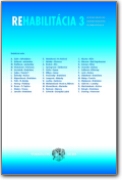Dysfunction of sacroiliac joint - pitfalls of diagnostics and possibilities of therapy from the perspective of a neurosurgeon.
DOI:
https://doi.org/10.61983/lcrh.v60i3.6Keywords:
SI joint, peri/intraarticular injection, conservative treatment, provocative maneuvers, rehabilitationAbstract
Spine as a dynamic structure endures constant changes during the whole life. Unique anatomic adjustment of individual structures and their mutual connection enables not only simple wide range of movement, but also its permanent adaptation to the requirements of human load - not only in actual movement, but also during maturing and ageing.
Spinal neurosurgery, despite intensive and extensive examination methods, is often not able to exactly identify the reason of origination of vertebrogenic pains. Their etiology remain often unclear despite the radiographic examinations, because of many possible pain generators and their mechanisms of origin.
Sacro-iliac (SI) joint dysfunction is underdiagnosed cause of low back pain (LBP). Diagnostics of complicated, symptoms of SI dysfunction are often overlapped by the symptoms of lumbar spine of other etiology. Diagnostics is based on anamnesis - characteristics of pain, radiation, its link to specific motion and clinical examination - palpation tenderness, distraction test, reversed Laségue test, Patrick maneuver - Faber test. Explicit radiographic finding is often not able to obtain.
Use of peri/intraarticular treatment of SI joint is considered as a successful diagnostic- therapeutic modality to differ the pain emerging from SI joint from other vertebrogenic pains manifesting the pattern of LBP and radicular syndrome of lower limbs. Adaptation of daily activities and SI joint load are basic pillars of the therapy, together with well guided and adopted rehabilitation exercises and bandage treatment. We assume that direct peri/intraarticular treatment of SI joint may lead to improvements and long term satisfactory effect in patients with SI joint dysfunction and together with rehabilitation may bring sufficient and long term relief from pain.
Consistent diagnosis determination and subsequently optimally chosen therapeutic procedure is a key to good therapeutic result, to improve the quality of life of patients and to retain their ability to work and to play their role in family and whole society. Equally, it restrain the overtreatment of patients and precedes useless surgeries.
Published
How to Cite
Issue
Section
License
Copyright (c) 2023 journal REHABILITÁCIA

This work is licensed under a Creative Commons Attribution-NonCommercial-ShareAlike 4.0 International License.


